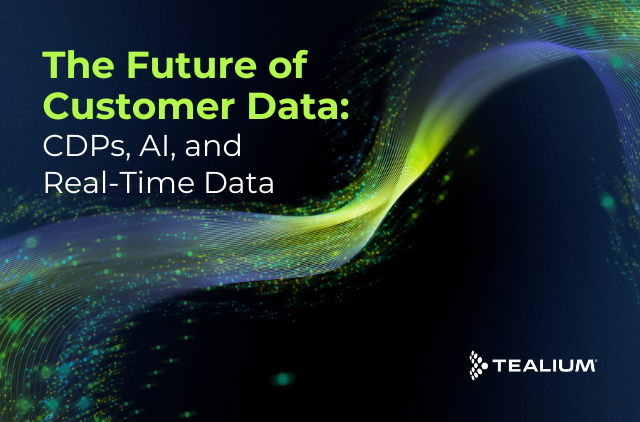Well, marketers and analysts, we’re well into 2021 and data privacy has continued its push out of the InfoSec and legal team agenda and into the customer experience. Whether data privacy conversation takes the context of shifting consumer attitudes, new regulations or technology changes – the fact remains that privacy is now an integral piece of marketing and customer experience. So privacy isn’t just about avoiding financial repercussions anymore, but also the arguably costlier impact of diminishing consumers’ trust and lifetime brand relationship
So as we step further into a year filled with privacy questions, we have a question you should be asking yourself. Which data privacy terms and acronyms should I be keeping top of mind this year as a marketer or analytics professional? To answer, let’s crack open our glossary of privacy terms for 2021.
Spoiler alert, this year’s theme is all about the new terms you’ll hear as your prepare for life beyond the third-party cookie.
First-Party Data
What is it? We will be referring to “first-party data” a lot in this blog – so let’s start there. First-party data is data that is collected from your web properties, apps, or independent systems and sources of data and is controlled by you. It’s really that simple. Thus, it gives you an opportunity to establish efficient automation aligned with privacy requirements and marketing needs to procure because you have to earn consumers’ trust first.
Why does it matter in 2021? First-party data is the backbone of understanding the customer experience. With first-party data, you can analyze how consumers interact with your brand to improve the experience and deliver better engagement holistically and individually. Privacy legislation like CCPA and GDPR as well as technology changes are making first-party data more important this year as well. More on that in a bit, but if you’d like to head off and learn more about first-party data strategies before you continue, you can head here.
CPRA
What is it? The California Privacy Rights Act (CPRA) is a California ballot initiative – Proposition 24 – that voters passed in November 2020 to strengthen CCPA. It will give Californians the ability to request that companies not sell their data as well as create a new agency focused on implementing and enforcing the law.
Why should you know about this in 2021? While enforcement of the CPRA won’t take effect until July 1, 2023, that doesn’t mean you should ignore the regulations until then. Continued privacy legislation is just one of many reasons why businesses need to gain full visibility and control over the data coming into and out of their business. Where do you start? It’s a great question that we have you covered with this Master Class series on CCPA that covers how marketers, analysts, and developers can go from basics to best practices on the CCPA as well as how to get your data strategy in place to help with regulatory compliance.
Data Deprecation
What is it? It’s a term first coined by Forrester that puts regulatory, business, consumer and browser privacy shifts under a single umbrella and puts emphasis on how these will all ultimately impact the way marketers and analysts have typically gained access to data.
Why does it matter in 2021? Data deprecation, and especially the deprecation of third-party cookies, mean marketers must now reimagine how they collect and leverage data to effectively acquire new customers or retarget existing customers in a privacy-first way. For most marketers, the change will be significant (or already is) and marketers that have invested in the creation of first-party customer data assets have the advantage today, tomorrow, and probably for the long term.
Choice and flexibility in the ways in which you go about getting first-party data will be crucial. You’ll want tools (like Tealium) that provide you with options to build resilient tracking, resolve identity, build audiences, enhance governance and improve the way you integrate it with downstream advertisers.
Walled Garden
What is it? A walled garden is an organization that keeps its technology, information, and user data to itself, with no intention of sharing. When it comes to our world in marketing and analytics, this term is used to refer to companies that have built up a pool of unique first-party and third-party data that is leveraged to segment and target ads in their own platform.
Why does it matter in 2021? As third-party cookies begin to decay, and adtech attempts to adapt, advertisers will rush to a consistent experience and reporting methodology offered by “walled gardens” who have been preparing for this eventuality for the past year. The way that advertisers will work with walled gardens will probably continue to change this year (you can read more on that here). The brands that will get the most from walled gardens will be ones that own and manage consented first-party data that they can use to help optimize campaigns and measurement.
CDP
What is it? Let’s take a look at Gartner’s definition, “A Customer Data Platform (CDP) is a marketing system that unifies a company’s customer data from marketing and other channels to enable customer modeling, and optimize the timing and targeting of messages and offers.” That’s a pretty traditional definition of a customer data platform, but how does this technology assist in privacy regulation efforts? Simply put, it’s not only marketers who benefit from a single view of their customers. Data privacy practitioners also want a view of their customer data across every channel to more easily comply with emerging privacy regulations. In addition to privacy regulations, customer data platforms also help with building a unique identity graph to help build customer profiles, build audiences and manage the flow of first-party data.
Why does it matter in 2021? Today, consumers are more privacy-conscious than ever, and that’s a good thing. By creating a single source of trusted customer data, CDPs can help ensure that privacy preferences are met and honored throughout all channels. Privacy offices can more easily respond to requests by having a single source of trusted data. Businesses as well can more easily collect, unify and activate first-party data across engagement channels. While it does not stand alone, a CDP is the cornerstone of a customer-centric approach to first-party data collection and use. It enables your personalization efforts while helping you meet the demands of privacy regulations.
Conclusion
While the list above probably doesn’t cover every privacy acronym you’ll need to have up your sleeve for 2021, I hope it’s a good start.
Looking for more data privacy information from Tealium? Check out our:







